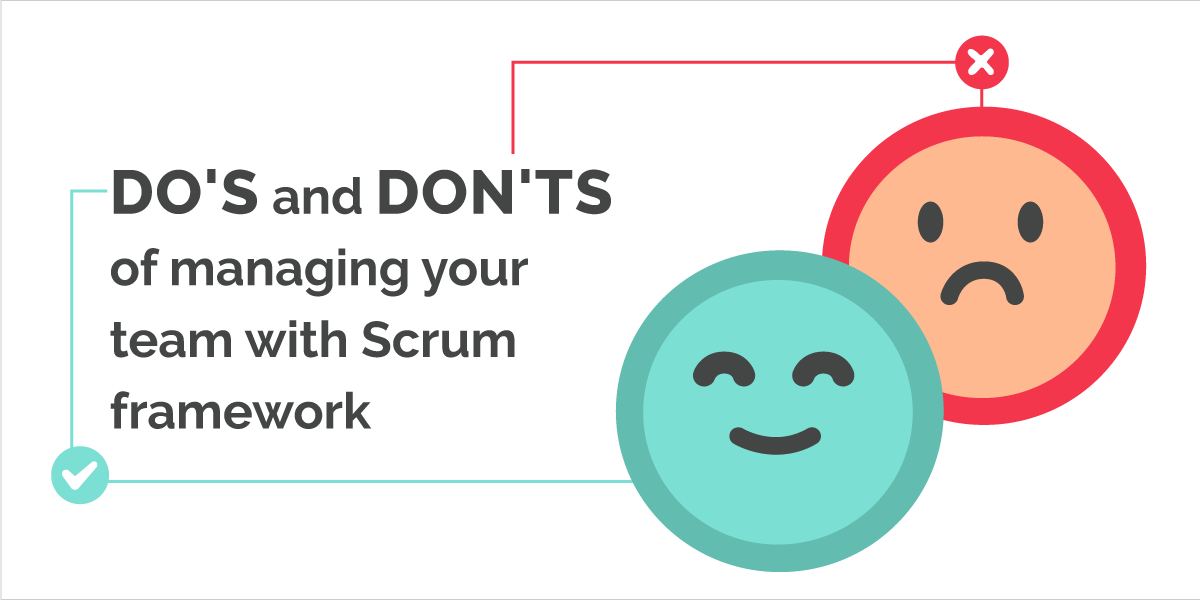Learning about Agile systems can almost be like learning a new language. There are so many terms, ideologies, and frameworks to remember that it’s easy to get things confused or jumbled up. Whether you are confusing Scrum with Agile, still figuring out how to hold an effective Sprint Planning meeting, or unsuccessfully applying Agile frameworks, it can be frustrating and complicated to implement a system if you are unfamiliar with its practices.
There are a lot of steps that need to take place during a Sprint Meeting. Running a successful meeting requires organization and communication, along with effective leadership and teamwork. Although the Scrum Master is responsible for knowing the ins and outs of Agile, it is important that every team member is familiar with the frameworks, terms, and definitions in order to make things run smoothly.
One of the most important steps in a Sprint Meeting involves backlogging. Both Sprint Backlogs and Product Backlogs are absolutely essential for Development Teams to plan their next steps. Shockingly, only 56% of teams use these in every project. To make matters worse, there tends to be some confusion between Sprint backlog and Product Backlog.

Thankfully, there are some very distinct differences between the Backlogs that are easily cleared up.
Product Backlog
The Product Backlog is simply the list of everything that must be done in order for a project to be completed. It is an exhaustive catalog that clearly shows what teams must accomplish during their Sprints in order to finish a product.
An effective Product Backlog should include details that breakdown each item into steps, making the task easier for Development Teams to understand. Each step should also include time estimates to help teams determine how soon to start each project and how long they should take to complete.
By design, the Product Backlog is constantly changing and adjusting (and hopefully shrinking) based on the actions of the Development Team. Once steps are completed, they are removed from the Product Backlog. However, as the project grows and develops, steps may need to be added to the Product Backlog as well.
Sprint Backlog
During a Sprint Planning meeting, teams work together to determine which steps of the Product Backlog will be completed during each Sprint. The projects that are added to this “to-do” list make up the Sprint Backlog. Depending on the complexity of the project, the number of items in this list will vary so that teams are able to complete everything on time during their dedicated Sprints.
The Sprint Backlog changes only during a Sprint Planning meeting, so it remains frozen during each Sprint. If some of the items are not completed during a Sprint, then they will remain in the Backlog for the next round.
Working Together
In order for a Sprint to be planned properly, Development Teams must understand the differences between these backlogs and how they work together. During each Planning Meeting, the entire Development Team (including the Scrum Master and Product Owner) should discuss what needs to be done and how each step must be completed. Items are then moved from the Product Backlog to the Sprint Backlog with a set deadline for completion.

Now that the terms are cleared up, we can discuss how to implement these two backlogs more effectively.
Creating a More Effective Product Backlog
The first step of creating a Product Backlog is certainly the hardest, and it can be intimidating to the unprepared Product Owner. It requires them to not only understand every single part of the overall project that must be completed, but also how to break up those steps into easily completed tasks for the Development Team.
The Product Backlog must be an exhaustive list of everything that must be done in order for a project to be properly completed. This list is designed by the Product Owner who has the ultimate vision for the project. Since this backlog is the guide for the Agile team, it must be thoroughly thought out and clearly written to clear up any confusion or questions that may arise.

Organization is key in order for a Product Backlog to be effective. The order of completion for each project must be clearly premeditated and explained in order for everything to go to plan. Therefore, Product Owners must recognize what each task will entail to design a Product Backlog that will work for the entire team. The Product Owner needs to have a deep understanding of the end goal for the project by determining what the customers want to see from the program. They are responsible for creating value to the customer through the project, and must always keep their interests in mind when designing the Product Backlog.
Nutcache’s backlog management system makes it easy for Product Owners to organize the Backlog, with timeline estimation and color coding capabilities. If additional steps or edits are needed, Product Owners can easily make changes with the simple drag and drop system.

Designing a Better Sprint Backlog
While the Sprint Backlog is easier to design, it does require Development Teams to take a good hard look at their production capabilities in order for them to plan their Sprints effectively. It can be easy for teams to get a little ambitious and overload themselves if they aren’t careful.
The Sprint Backlog requires every member of the Development Team, along with the Scrum Master, to estimate just how much they can handle during each Sprint session. On average, most Sprints tend to last two weeks, but this number can vary based on the team’s size and production capabilities. Be sure to choose a Sprint length that works for your team so that they are not rushed to finish any tasks.
As the team determines which steps should be added from the Product Backlog during a Sprint Planning meeting, there should be open discussion and brainstorming to develop an effective strategy for completing all of the tasks. Before a step is moved from the Product Backlog to the Sprint Backlog, the Scrum Master and Product Owner should make sure that the Development Team knows how to complete the task and what each step entails. This will help to clarify any confusion or misunderstandings, and it could save the team lots of time in the long run.

Again, organization is key for Development Teams to stay on track and complete each Sprint Backlog during the defined timelines. Nutcache simplifies the Backlog into an easy to use dashboard that shows exactly which tasks are completed, in progress, or still on the to-do list. The project planning system makes coordination much more efficient, and it keeps the Development Team organized and connected during every Sprint.

In Conclusion
All in all, both of these backlogs must be clearly written and organized to yield quality results both you and your customers will be proud of. If you’re someone who enjoys making lists for everything that needs to be done, you will likely enjoy the backlog process. But, if organization isn’t exactly your thing, thankfully, there are plenty of backlog tools out there that can help the entire team stay on track.







